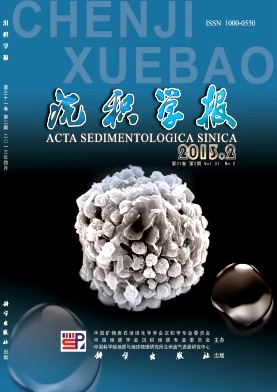Characteristics and Environmental Significance of Lacustrine Oncolites in Paleogene Guanzhuang Formation in Pingyi Basin, Shandong Province in Eastern China
- Publish Date: 2013-04-10
-
Key words:
- /
- Pingyi Basin /
- Guanzhuang Formation /
- lacustrine faices /
- oncoid /
- characteristics
Abstract: Many types of oncoids, which have great significance for sedimentary environment research, are well developed in Paleogene Guanzhuang Formation in Pingyi Basin. Based on previous studies, the morphometry, structure, fossil, texture and the characteristics of geochemistry of the oncolites in host area were analyzed by means of field inspection, microscope observation and geochemical test. In order to study the characteristics and environmental significance of lacustrine oncolites in Paleogene Guanzhuang Formation in Pingyi Basin, the following aspects are described in this paper: (1) The general geological conditions of the host area. (2) The research on the sedimentary environment and growing pattern of the oncoids in host area in Guanzhuang Formation. (3) The characteristics of the oncoids and oncolites in host area. (4) The classification the oncoids in Paleogene Guanzhuang Formation in Pingyi Basin. Based this study, the oncoids were divided into Type A and Type B, and the most fundamental difference between them lies in sedimentary environments where they originated. Type A originated in the higher energy water than Type B, and Type A developed in quiet and clean water while Type B growed in the turbid water. According to above study, the oncolites developed in a close, dry and hot lake, which was on the stage of transgression.
| Citation: | Characteristics and Environmental Significance of Lacustrine Oncolites in Paleogene Guanzhuang Formation in Pingyi Basin, Shandong Province in Eastern China[J]. Acta Sedimentologica Sinica, 2013, 31(2): 259-268. |






 DownLoad:
DownLoad: